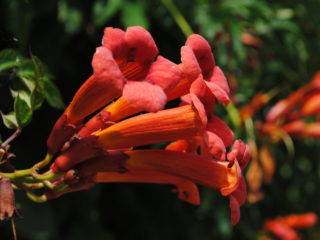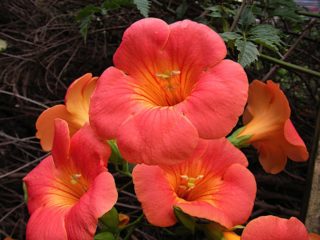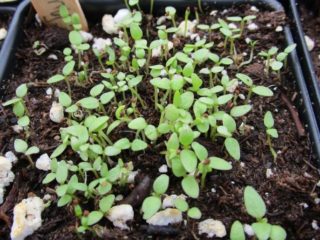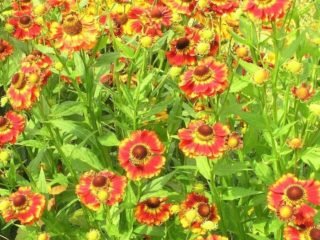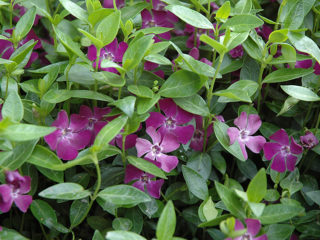Content
Campsis liana is a perennial, deciduous, beautiful flowering plant. Amazingly beautiful buds of various shades of orange, red and yellow decorate the garden with a sunny glow almost all summer. The perennial deciduous garden vine Kampsis is unpretentious in care, blooms profusely and for a long time, takes root in areas with a relatively warm climate, and tolerates frost well. The flower began to be grown as an ornamental in the 17th century in North America. In the 18th century, the vine was brought to Europe and began to be used to decorate small architectural forms and create living hedge walls.
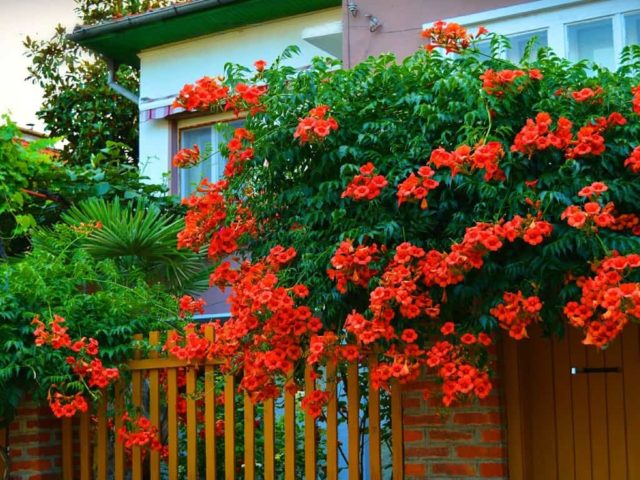
Thanks to the beautiful foliage, the crop has a decorative appearance even during the dormant period
Botanical description of the Kampsis plant
The flowering liana campsis has many species and varieties. They all have common characteristic features:
- powerful root system that grows in breadth and depth;
- aerial roots for attachment to a support;
- stem height up to 10-15 m;
- young stems are bendable, green;
- the stems of an adult plant are woody and brown;
- leaves are opposite, large, imparipinnate, consisting of 5-11 small leaf blades with a serrated edge;
- leaf length up to 20 cm;
- The color of the leaves is rich green;
- inflorescences loose panicles;
- the shape of the flowers is horn-shaped or gramophone-shaped;
- flower length up to 9 cm;
- flower diameter up to 5 cm;
- flower color: yellow, golden, orange, pink, crimson, purple;
- there is no aroma during flowering;
- flowering period from July to September;
- fruits in the form of leathery pods with many seeds with “wings”
It is surprising that despite the complete absence of odor, the inflorescences are carriers of large amounts of nectar. Therefore, the Kampsis liana flower is surrounded by numerous honey collecting insects. When the crop begins to produce smaller flowers, the plant should be rejuvenated. Seed material after the end of the flowering period is formed only if there is another plant of this species nearby. The growth rate of the aboveground part is up to 2 m per year. The plant is ideal for growing in urban environments, as it easily tolerates gas and polluted air.
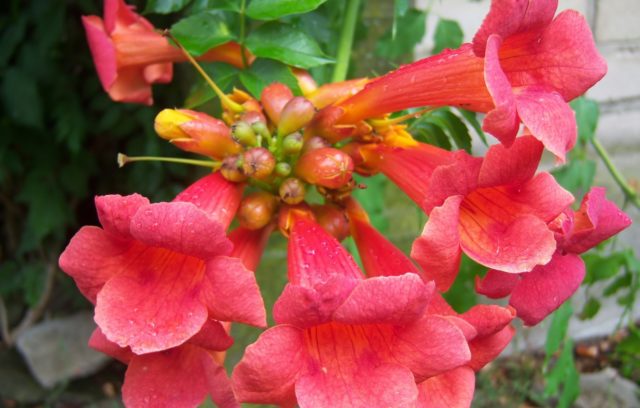
Since the root system is actively growing, the bush quickly takes over the nearby territory
Frost resistance of Kampsis
Campsis liana is a frost-resistant crop. The plant can withstand temperatures down to -20 ⁰C. Viable flower buds die at a temperature of 0 ⁰C, but are restored again with the beginning of the growing season. In the southern regions, the flower overwinters without shelter.

Garden perennial thrives in subtropical and tropical regions
Types of Kampsis
There are three main types of vines (Campsis) known:
- large-flowered or Chinese;
- taking root;
- hybrid.
There are two species found in wildlife: Chinese and rooting. The large-flowered Campsis vine (Campsis grandiflora) grows in the Far East (China, Japan). The rooting vine Campsis radicans is native to North America. The hybrid species (Campsis hybrida) is an artificially bred crop resulting from crossing rooting and large-flowered vines.
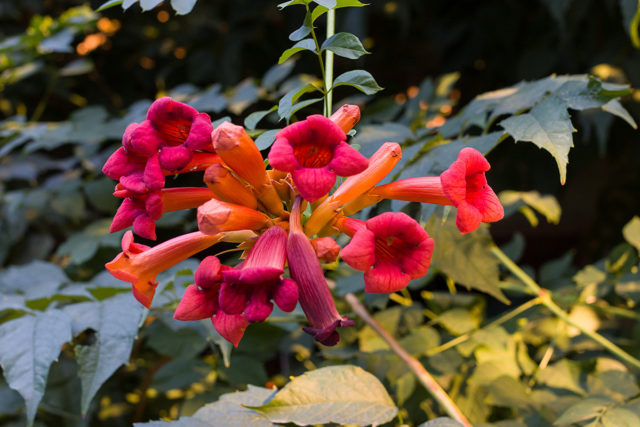
The buds on the bush open gradually, so it seems that the ornamental plant blooms non-stop all summer
Large-flowered
The large-flowered species of Campsis vine (Campsis grandiflora) is an elegant perennial that is thermophilic and can withstand frosts from - 10 ⁰С to - 18 ⁰С. In landscape design, the Chinese liana (Campsis) is used in Southeast Asia, Taiwan, Vietnam, Pakistan, and India. Decorative culture has the following characteristics:
- shoot size up to 15 meters;
- flower length up to 9 cm;
- the color of the outer side of the flowers is deep orange;
- The color of the inner side of the flowers is red-pink.
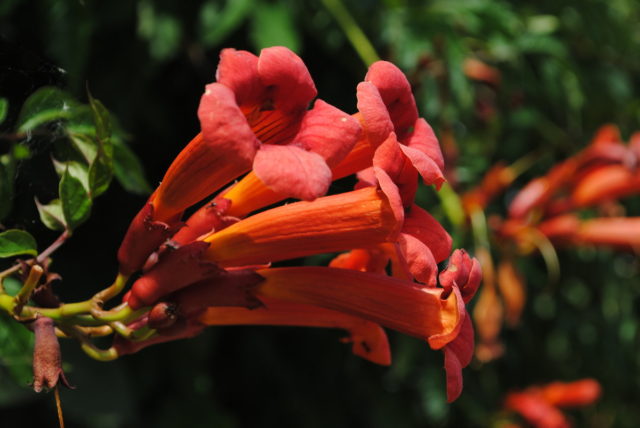
The heat-loving species of large-flowered perennial does not grow in central Russia
taking root
The rooting vine Campsis radicans is considered a deciduous plant. The plant tolerates frost well. A distinctive feature of the rooting species Campsis radicans are long aerial roots, with the help of which the flower captures the territory.
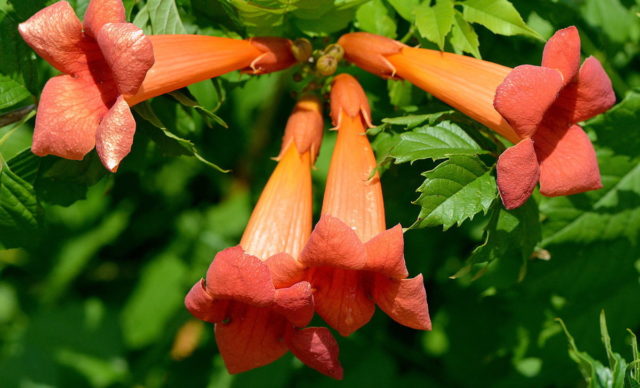
The rooted type of perennial is resistant to various adverse environmental factors.
Hybrid
The hybrid species of Campsis vine (Campsis hybrida) is the result of the work of breeders. The plant combines the most striking and positive qualities of the mother species (large-flowered and rooted).The decorative hybrid species tolerates temperature changes and frosts well, and is distinguished by its rather large flower sizes.
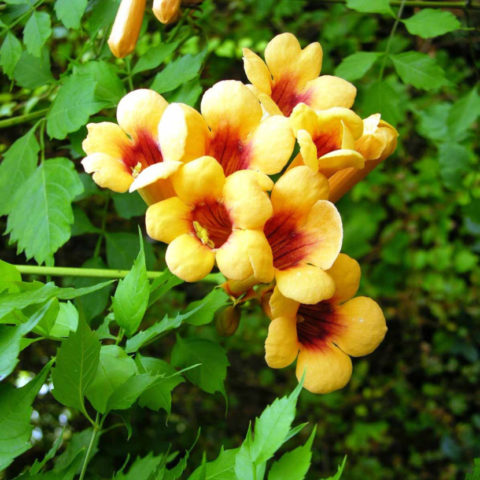
The color range of the hybrid species of Campsis liana varies from white-pink and white-yellow to orange and red.
Kampsis varieties
Numerous decorative varieties of Campsis erecta liana occupy a special niche in the design of landscape areas. Unpretentious and stress-resistant plants are excellent for growing in different climatic conditions.
Flava
The variety of deciduous vine Flava (Flava), or yellow campis, is distinguished by the following parameters:
- shoot size up to 15 m;
- flower length up to 9 cm;
- flower diameter up to 5 cm;
- The color of the inflorescences is lemon or yellow.
The decorative variety is characterized by abundant flowering from June to October.
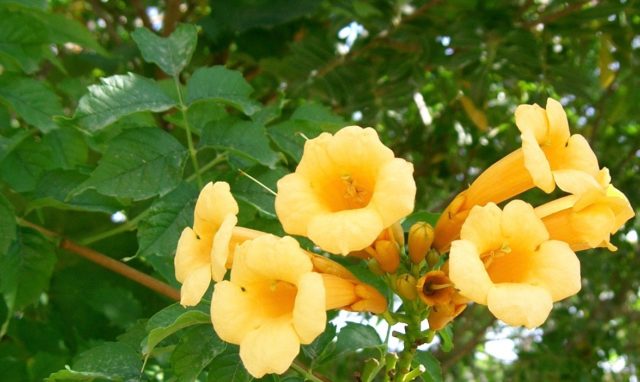
The Flava variety is considered the most frost-resistant, withstands frosts down to -20 ⁰С
Fabulous
The deciduous variety Magnificent cannot be called climbing. In appearance, the plant is more like a shrub, which is characterized by flexible and thin shoots.
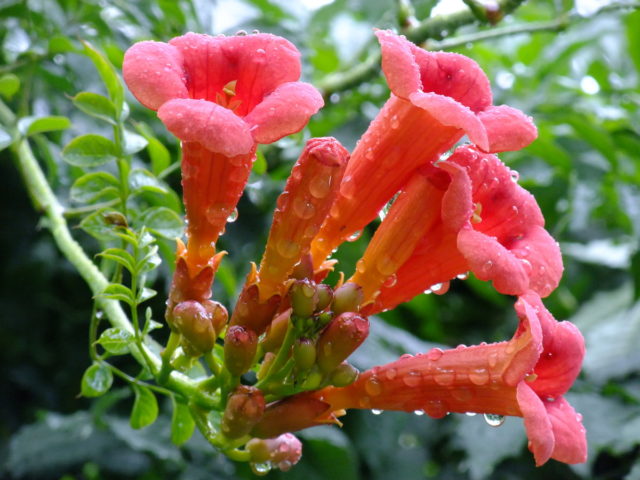
The Magnificent variety is distinguished by its orange-red flower color.
Trumpet Vine
The name of the exquisite variety Trumpet Vine translates as “Magnificent French lace” or “Grapevine”. Decorative culture can be called universal. The bush can grow 10 meters in height along the support. If desired, the Campsis vine Trumpet Vine can be formed into a bush. The variety is distinguished by abundant flowering of bright, yellow-red or yellow-pink inflorescences. The root system of the vine is powerful, capable of lifting wooden boards, sewer pipes, and asphalt.
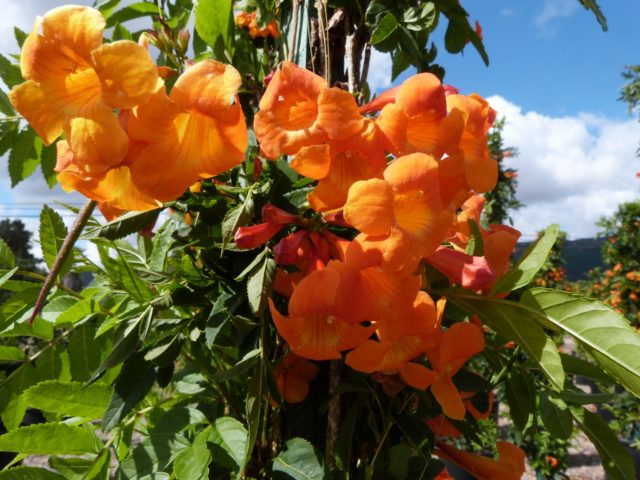
The Trumpet Vine liana should be planted only on the sunny side, as the ornamental crop stops blooming in the shade
Flamenco
The decorative variety Flamenco is a surprisingly fast-growing vine that has the following characteristics:
- shoot size up to 10 m;
- flower diameter up to 8 cm;
- The color of the inflorescences is rich, dark red.
Flowering of the garden vine Flamenco begins in July and ends in October. The plant does not tolerate waterlogging and overwinters at temperatures down to -17 ⁰C.
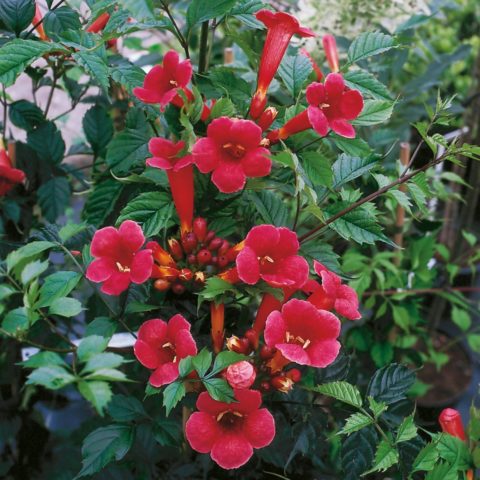
Experienced gardeners recommend covering the Flamenco vine for the winter with spruce branches.
Judy
Garden variety Judy is a frost-resistant ornamental crop, adapted for cultivation in central Russia. Judy winters well at temperatures down to -20 ⁰C. The plant has the following characteristics:
- shoot size up to 4 m;
- the color of the flowers is bright yellow;
- The color of the middle of the flowers is orange.

The garden variety of Judy vine blooms all summer: from July to October
Application in landscape design
Despite the fact that Kampsis is considered an exotic deciduous plant, it is widely used to decorate territories throughout central Russia and in the southern regions. The main role in landscape design is vertical gardening of various small architectural forms:
- gazebos;
- arches;
- walls of houses on the sunny side;
- fences
The plant can be used as an independent element of landscape design. In addition, the garden culture harmonizes perfectly with other flowering annuals and perennials. If desired, vine shoots can be directed in different directions to form vertical elements of landscape design. Another option for using Kampsis is in the form of a bush, which is pruned and you end up with a lush flowering, exotic specimen in any sunny corner of the garden. The photo below shows Kampsis in landscape design.

The weaving long shoots of Kampsis can form beautiful hedges that bloom luxuriantly all summer long.
Conclusion
The garden liana campsis is popularly called woody begonia. The deciduous plant belongs to the group of lush and long-blooming flowers. Translated from Greek, the name of the culture “kamptein” sounds like “to bend, bend, twist.” The ornamental crop attracts gardeners and landscape designers around the world due to its long flowering period - about 4 months. Sometimes the ornamental bush is called the liana Tecoma campsis (Tecoma), but this is not correct from a botanical point of view, since the plant belongs to the Bignoniaceae family.
